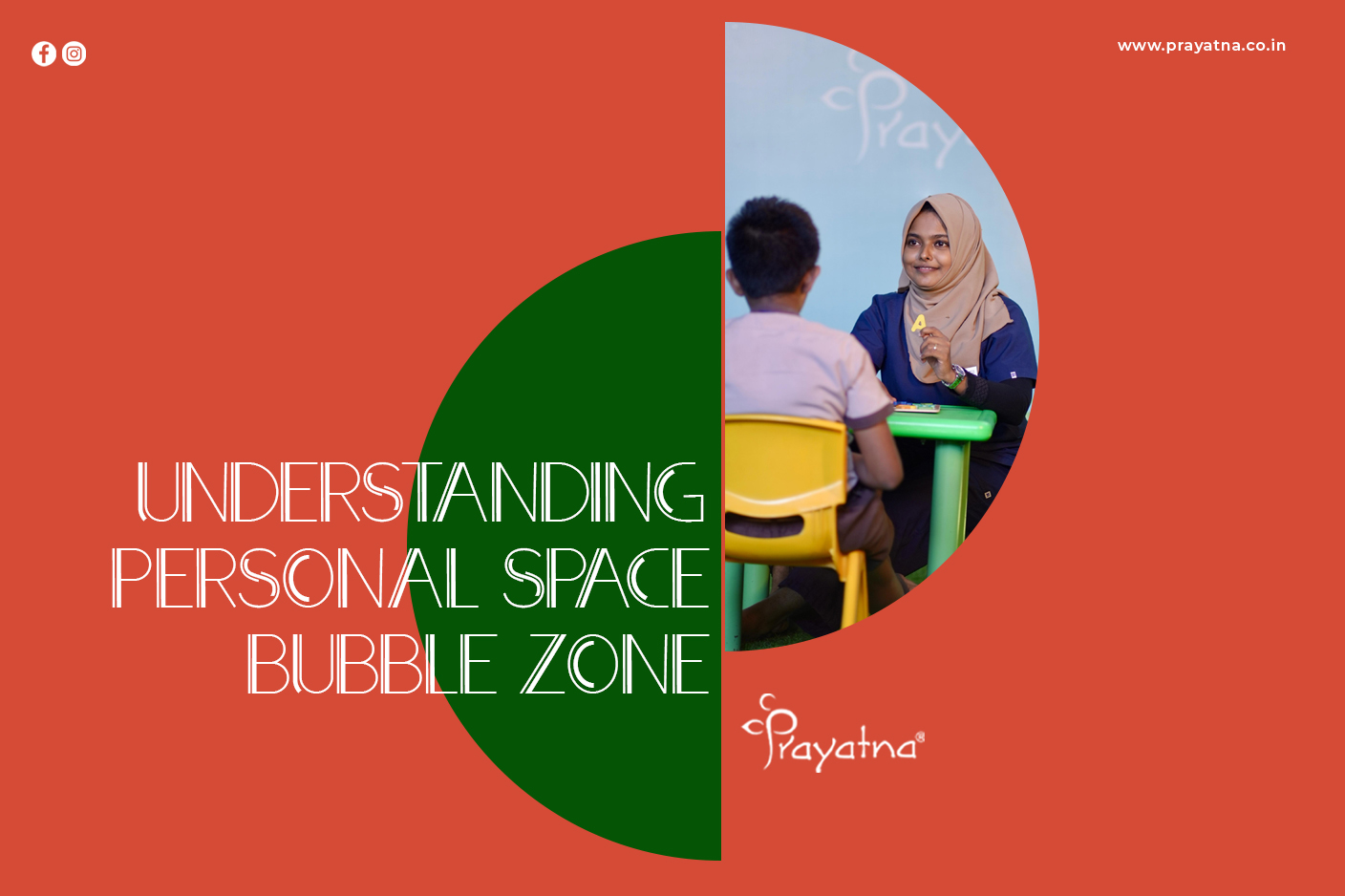
Written By
Dr Joseph Sunny Kunnacherry
Director
Personal space refers to the invisible boundary around each individual that provides them with a sense of safety and comfort during social interactions. For many children, especially those with special needs, understanding and respecting personal space can be challenging. The concept of the ‘Bubble zone’ is helpful for children to recognize and maintain their personal space. It offers a simple and effective way for children to learn about physical and emotional boundaries, which is vital for successful social interactions.
Importance of Understanding Personal Space
For children with special needs—such as those with Intellectual Disability, Autism, ADHD, or sensory processing disorders—the idea of personal space can often be difficult to grasp. These children may struggle with recognizing how close they can get to others without causing discomfort or anxiety.
As a result, conflicts or misunderstandings can arise. Understanding personal space not only helps to reduce these social conflicts but also promotes positive interactions. It plays a crucial role in minimizing sensory overload and fostering a more comfortable environment for children. This understanding can make a significant difference in their social development and emotional well-being.
- Benefits of understanding and using Bubble Zone
Respecting personal space has several key benefits, especially for children with social challenges. By teaching children the importance of maintaining boundaries, they can experience:
– Reduced Anxiety and Stress: Children who respect their own personal space and understand others’ boundaries may feel more at ease in social settings, which can lead to reduced anxiety and stress.
– Improved Self-Advocacy: Learning to communicate their needs for personal space empowers children to advocate for themselves in social and educational environments. This ability fosters independence and confidence in various situations.
–Enhanced Group Dynamics: As children become more aware of their own personal space, they are likely to feel more confident in group settings. This leads to improved social integration and a better overall experience in group activities, whether at school or in social circles.
- Teaching Methods
There are several practical ways to help children learn about personal space using the Bubble Zone concept. Here are some effective teaching methods:
- Visual Aids
Visual aids can be a powerful tool for children with special needs. For example, drawing a circle around a child to represent their “bubble” or using hula hoops during group activities can help children visually understand their space. These physical markers give them a tangible representation of boundaries.
- Social Stories
Social stories are simple narratives that illustrate real-life situations, including the importance of personal space. These stories show both the positive outcomes of respecting boundaries and the negative consequences of invading someone else’s space. Social stories are especially useful for children who struggle with abstract concepts, as they make the information more relatable and understandable.
- Role-Playing and Modeling
Role-playing offers a hands-on approach to teaching social skills. By modelling appropriate behaviours—such as asking for space when needed or respecting someone else’s bubble—children can learn by observing and practising. Engaging in these role-playing scenarios in a safe and supportive environment allows children to rehearse real-life interactions and build confidence in handling social situations.
- Collaboration with Families
Consistency across settings is essential for success. Parents and caregivers play a crucial role in reinforcing the concept of personal space at home and in the community. By collaborating with family members, educators can ensure that children receive consistent reinforcement of the Bubble Zone concept, leading to better understanding and stronger social skills.
In Conclusion the Importance of Understanding personal space is a vital social skill for all children, and it is particularly important for those with special needs. By teaching children about personal boundaries—both their own and others—we help them build the confidence and self-awareness needed to foster positive relationships. These skills not only enhance their ability to engage in social and educational settings but also contribute to their overall emotional growth and sense of belonging.
Through methods like visual aids, social stories, role-playing, and family collaboration, we can support children in mastering the concept of personal space and ensure they feel safe, respected, and confident in all their interactions.

